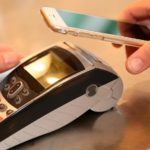Simple and intuitive, that's how mobile banking should be
User experience in the world of online banking is a keystone in the path to success. The digital customer demands a simple and intuitive process to access their usual financial services.

In 2015, one in every 10 adults started using mobile banking only in the United States, which represents that the mobile customer base increased by 25 million users. But these numbers are not by any means likely to stay like that, because it is estimated to be a booming market: Consumers have purchased 28 million smartphones and 29 million tablets, suggesting that the niche of potential customers should be huge. But, how can they be won over?
Designing a strategy to improve communication and interactions with online and mobile banking customers is one of the goals for the traditional financial institutions which, driven by the rise of fintech, are carrying out their own digital transformation processes.
The first step that many institutions have taken is launching an app with their financial products and services. In fact, in the past year, many of these apps ranked among the most downloaded in the Finance category of the most popular app stores: Google Play and App Store. Mobile apps by banks such as ‘laCaixa’, BBVA, Santander or Sabadell are already competing with more established apps, especially in the payments niche, such as PayPal.
Specifically, in Spain, 35.7% of users that have a payments app installed uses BBVA Wallet. This figure places BBVA Wallet as the second most popular banking app in the country, just behind PayPal, according to a mobile market study by sngular.
Checking an account’s balance and movements; ordering transfers and making payments, activating bank cards; receiving notifications; setting up direct debits; managing your stock investments; even sign contracts… the number of services that users can enjoy through their smartphones. Everything aimed at improving the user’s experience with the institution.
If a user downloads its current bank’s app or an app from any other institution or to “open an account” they have to face a cumbersome one-thousand-step procedure or are required to fill out a never-ending form, that customer will be a lost customer for the mobile banking cause. User friendliness is vital for customer engagement: for example, processes need to be as easy as uploading a photo of an ID-card that shows the person’s personal details. This entails embracing technologies such as OCR to capture the information contained in such photographs, whether of an ID card or an invoice, for example.

Specifically, in Spain, 35.7% of users that have a payments app installed uses BBVA Wallet
The mobile strategy may vary, without compromising success, if instead of launching a native app, a company choses to improve the experience of the mobile version of its website. Virtually all financial institutions already have a fully-fledged website, offering access to all their products and services. However, not all these sites have their corresponding mobile version, which can make things a bit too difficult for users trying to access their services through their smartphones.
Improving this step is essential to convince customers about the benefits that the mobile app offers from a user experience point of view. In fact, it is possible to send notifications or alerts to these online users to make them aware about the advantage of using the mobile app for certain services.
Online banking is paving the way toward the digitization of banking to sow the market towards mobile banking. For example, BBVA Bancomer just launched its 'Digital Account (Cuenta Digital)', a product thought for online banking users but also for mobile banking users. This 100% digital account offers a series of advantages, starting with a simple and easy account opening process through this new channel using the Bmóvil app.
However, many mobile banking users do not use this channel exclusively, as it is always complemented with another one, whether the physical channel - branches or ATMs – or the online channel – the website. Some of the reasons why these users still visit physical branches are making deposits or withdrawing money.
The use of mobile banking
However, despite the increase in the mobile banking customer base (53% of smartphone owners in 2015), there is still a huge segment of mobile users that stay away from this type of channels. 67% of people in the 18 - 29 age bracket and 48% of the people aged 30 to 44 are online banking platform users. But there is still a major niche of customers that need to be “persuaded” to start using mobile financial services, according to data from the U.S. Federal Reserve reported by The Financial Brand.
The primary reason cited by people that do not use this financial channel is security, which means that banks still have a lot of work to do explaining these services to their customers and, especially, improving functionality. However, convenience continues to be the most compelling reason that customers cite for adopting mobile banking for specific financial products and services.
Thus 94% of mobile banking customers use apps to check their account balances and transfers; 58% for transferring money; 54% for receiving notifications; 48% for depositing a check to an account electronically using a mobile phone camera; 47% for paying bills and 20% to send money.